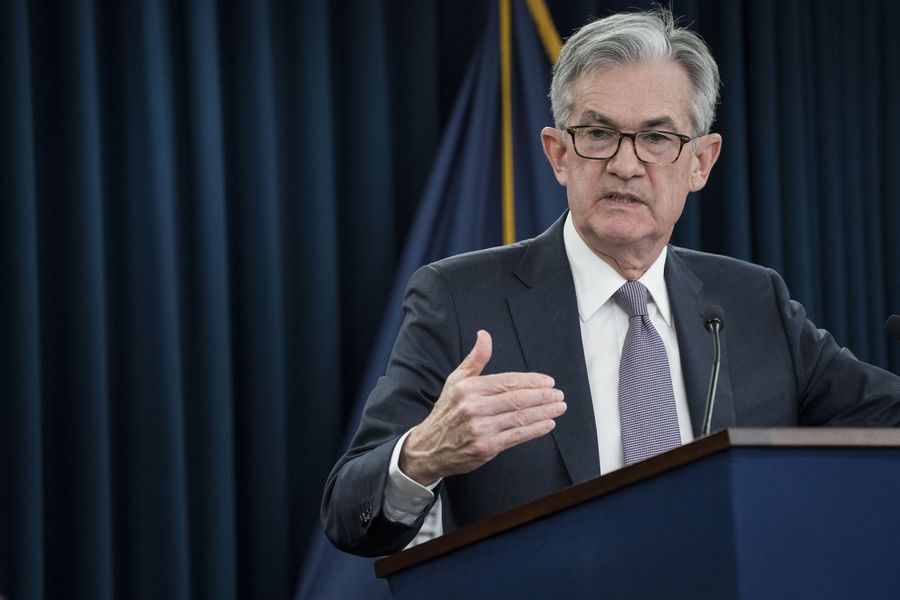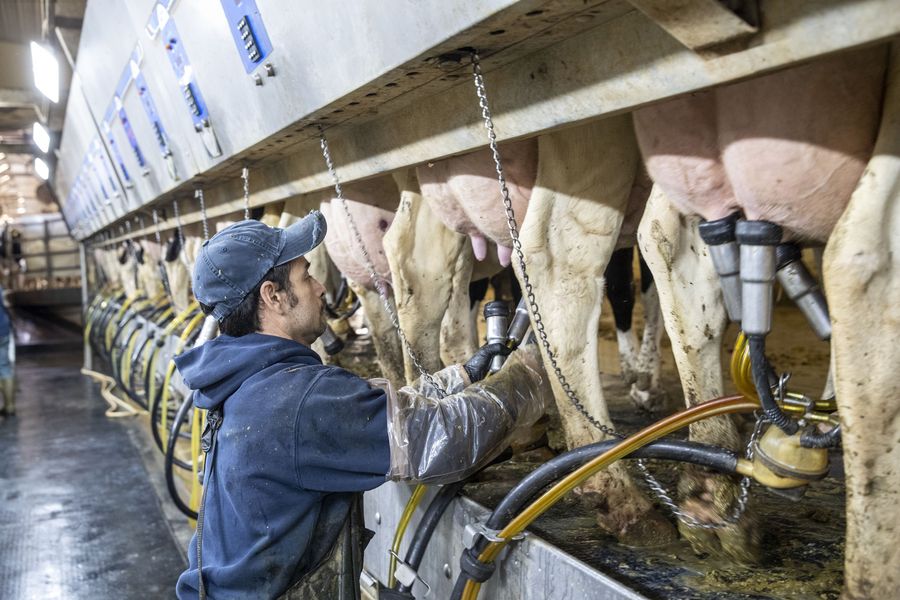
Colorful child's riding toys are displayed at the 116th Annual North American International Toy Fair at the Jacob K. Javits Convention Center in New York, the United States, Feb. 16, 2019. (Xinhua/Wang Ying)
The U.S. economy has maintained a moderate pace of growth, but it faces a thorny path ahead.
WASHINGTON, Dec. 24 (Xinhua) -- The U.S. economy, supported by robust consumer spending and a strong job market, has maintained a moderate pace of growth as 2019 draws to a close. While worries about an immediate recession have abated, its economy still shows signs of slowing down.
With business investment falling and manufacturing sector contracting, the U.S. economic recovery has hit a lot of bumps over the past few months. It faces a thorny path ahead amid lingering trade uncertainty and a synchronized global slowdown.
MIXED PICTURE
U.S. economic growth in the third quarter expanded at an annual rate of 2.1 percent, which is slightly up from the 2 percent in the second quarter and marks a sharp deceleration from the 3.1 percent in the first quarter, according to data from the U.S. Commerce Department.
A panel of professional forecasters recently surveyed by the National Association for Business Economics (NABE) anticipated the U.S. Gross Domestic Product growth would slow from 2.9 percent in 2018 to 2.3 percent this year.
After the central bank's latest policy meeting earlier this month, U.S. Federal Reserve Chairman Jerome Powell described the mixed picture in his words: "Household spending has been strong, supported by a healthy job market, rising incomes, and solid consumer confidence. In contrast, business investment and exports remain weak, and manufacturing output has declined over the past year."
Personal consumption expenditures, which account for roughly 70 percent of U.S. economic output, have seen robust growth during the first three quarters -- rising by 1.1 percent, 4.6 percent, and 3.2 percent respectively -- partly soothing fears over the health of the world's largest economy.
The unemployment rate, which has remained below 4 percent since the beginning of the year, dropped slightly to 3.5 percent in November, again hitting the lowest in nearly five decades. Job gains have averaged 205,000 from September to November.
Despite resilient consumer spending and a strong labor market, business investment has declined for two straight quarters -- dropping by 1 percent in the second quarter and 2.3 percent in the third -- acting as a drag on the overall economy.
Economic activity in the manufacturing sector, meanwhile, contracted for a fourth consecutive month in November, according to the Institute for Supply Management. The Purchasing Managers' Index registered 47.8 percent in September, the lowest in a decade.
TRADE UNCERTAINTY
The Fed chairman, along with many economists, has repeatedly cited trade tensions as one of the factors that have been weighing on the U.S. economy.
Noting that the economy faced some "important challenges" from weaker global growth and trade uncertainty over the past year, Powell said the central bank adjusted the stance of monetary policy to "cushion" the economy from these developments and "provide some insurance against the associated risks."
The Fed has lowered interest rates three times since July, amid growing uncertainty stemming from trade tensions, weakness in global growth and muted inflation pressures. These policy adjustments put the current federal funds rate target range at 1.5 percent to 1.75 percent.

U.S. Federal Reserve Chairman Jerome Powell speaks during a press conference in Washington D.C., the United States, on Dec. 11, 2019. (Xinhua/Sarah Silbiger)
The Business Roundtable, an association of CEOs for some of the largest companies in the United States, recently said its index of the CEOs' economic outlook in the fourth quarter dropped to 76.7, which remains below the historical average and marks the seventh consecutive quarterly decline.
"CEOs are justified in their caution about the state of the U.S. economy. While we have achieved a competitive tax environment, uncertainty surrounding trade policy and slowing global growth are creating headwinds for business," said Joshua Bolten, president and CEO of the Business Roundtable.
According to the NABE survey released earlier this month, trade policy continues to be the "most widely cited" dominant downside risk to the U.S. economy through 2020, with half of respondents citing it as the "greatest" downside risk.
U.S.-initiated trade tensions have taken a toll on the global economy. The World Trade Organization recently said that world merchandise trade volumes are expected to rise by only 1.2 percent in 2019, substantially slower than the 2.6 percent growth forecast in April.
In its latest World Economic Outlook report released in October, the International Monetary Fund lowered its global growth forecast for 2019 to 3 percent, warning that growth continues to be weakened by rising trade barriers and growing geopolitical tensions.
THORNY ROAD AHEAD
The U.S. economy is expected to further slow down next year against the backdrop of persistent trade policy uncertainty and a labor market that could be losing momentum, as well as a precarious global outlook.
Official data showed that job gains have averaged 180,000 per month so far in 2019, compared with an average monthly gain of 223,000 in 2018, indicating that the overall level of hiring has been slowing down over the past few months. Meanwhile, the pace of payroll growth has remained weak.
According to the CNBC Global CFO Council survey for the fourth quarter, 60 percent of chief financial officers expect their company's head count to decrease over the next 12 months.
The NABE survey panelists believed the U.S. economy would slow to 1.8 percent in 2020. "The consensus forecast calls for a pickup in housing, but slower growth in business investment and consumer spending, along with larger deficits in trade and the federal budget," said NABE President Constance Hunter, chief economist at KPMG.
The federal budget deficit, which ballooned rapidly during the Trump administration, has drawn concern from many. Powell, the Fed chairman, recently stressed the urgency for the U.S. Congress to address the issue, noting that there would otherwise be less fiscal space to support the economy in a downturn.
On the trade front, uncertainty has been the only certainty. Despite progress with Canada, Mexico and China, the United States has proposed tariffs on French products in retaliation for digital service tax, and its Boeing-Airbus aircraft subsidy dispute with the European Union has been escalating.

A worker milks a cow at a dairy farm run by Kelly D. Cunningham in rural Cass County of the U.S. state of Iowa, Oct. 16, 2019. (Xinhua/Wang Ying)
"The administration's trade policies have left little room to maneuver," Diane Swonk, chief economist at Grant Thornton, a major accounting firm, wrote in an analysis.
"Either the president backs off his campaign promises, holds the line on tariffs and the economy slows. Or, he risks a recession by doubling down on trade wars and heightening uncertainty," Swonk wrote. ■



